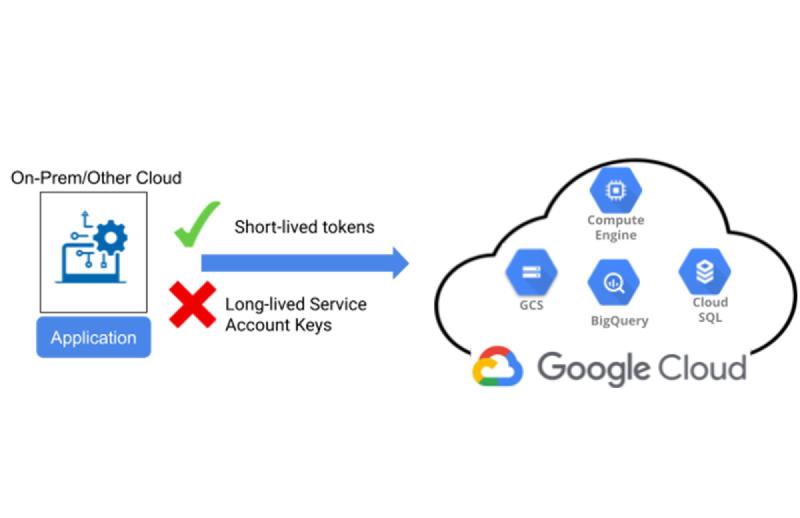❌ The Problem with JSON Keys
Using service account JSON keys in Kubernetes involves storing them as secrets and mounting them into workloads. While this works, it introduces serious security risks:
- 🔓 Exposure Risk – If a JSON key is compromised, an attacker gains access to cloud resources, potentially leading to data breaches.
- 🚫 Hard to Rotate – JSON keys don’t expire unless manually rotated, making it difficult to enforce security best practices.
- ⚠️ Secret Management Overhead – Storing and managing secrets in Kubernetes requires additional tooling and maintenance (e.g., External Secrets, Vault, etc.).
- 🎭 Identity Confusion – Kubernetes workloads are unaware of the identity behind the JSON key, making it harder to track which workloads are using which credentials.
✅ Why Workload Identity Federation (WID) is Better
With Workload Identity Federation, we can securely authenticate Kubernetes workloads without storing long-lived credentials. Instead of using a JSON key, we:
- 👤 Use a Google Cloud IAM Service Account with the
Workload Identity Userrole. - 🤖 Link it to a Kubernetes Service Account (KSA) that the workload runs under.
- 🔄 Enable automatic token exchange – The workload uses its KSA identity to impersonate the IAM Service Account dynamically.
🎯 Key Benefits of WID
- 🔥 Eliminates JSON keys, reducing credential exposure risks.
- 🔑 Short-lived, auto-rotating credentials, improving security.
- 🛠️ Seamless authentication, no need for secret management.
- 🔍 Better observability, as workloads assume their own identities.
📌 The Migration Process
I made several changes to adopt WID:
- Updated Helm charts to remove references to JSON keys.
- Created a Kubernetes Service Account (KSA) and linked it to the Google Cloud IAM Service Account.
- Removed External Secrets and environment variables that previously referenced the JSON key.
- Tested the new setup – Everything worked perfectly! ✅
- Deleted the old JSON key and its associated secrets to ensure no lingering credentials.
🎓 Lessons Learned
🔹 Security first! WID significantly improves security posture by removing static credentials.
🔹 Simplicity matters. No more JSON key management means less overhead and fewer things that can go wrong.
🔹 Observability improves. Since each workload assumes a unique identity, tracking access patterns is much easier.
🔹 Testing is key. Before deleting JSON keys, thorough testing ensures a smooth transition.
🚀 Final Thoughts
Moving away from JSON keys to Workload Identity Federation was a great step towards improving security and simplifying authentication for Kubernetes workloads. If you’re still using JSON keys in your clusters, I highly recommend making the switch! 🔄🔐
